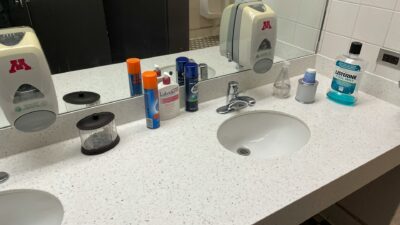Sustainable storage is a cornerstone of zero-waste living, helping you organize your home while reducing packaging and clutter. By repurposing items and creating DIY organizers, you can store food, supplies, and household goods without generating waste. This guide offers practical, creative ways to build zero-waste storage solutions, perfect for any home. For more eco-friendly tips, visit For Organic Life.
Repurposing Jars and Containers
Glass jars and other containers are ideal for zero-waste storage, keeping items fresh and organized. Here’s how to repurpose them:
- Glass Jars: Clean jars from sauces, jams, or pickles to store dry goods like rice, spices, or snacks. Use larger jars for bulk items like flour.
- Tin Cans: Remove labels and sanitize tin cans to hold utensils, pens, or small tools. Add a coat of non-toxic paint for style.
- Plastic Containers: Reuse sturdy containers from yogurt or takeout (if unavoidable) for non-food items like craft supplies or hardware.
- Bottles: Use glass bottles from beverages to store homemade cleaners or oils. Add a pour spout for easy use.
Sterilize containers by boiling or running through a dishwasher. Label with reusable chalk labels or masking tape for clarity. Repurposing containers reduces the need for new storage and keeps your home tidy and waste-free.
DIY Organizers from Recycled Materials
Homemade organizers turn trash into treasure, creating functional storage without waste. Try these projects:
- Cardboard Box Dividers: Cut shoeboxes or cereal boxes into strips to make drawer dividers for utensils or socks. Cover with fabric scraps for durability.
- Wooden Crate Shelves: Stack old crates or pallets to create pantry shelves or bookcases. Sand and seal with non-toxic finish.
- Fabric Baskets: Sew scraps of organic cotton or old clothes into baskets for toys or laundry. Add handles for easy carrying.
- Cork Boards: Glue wine corks to a frame to make a bulletin board for notes or jewelry. Source corks from local restaurants.
Use materials you already have, like old boxes or fabric, to keep projects zero waste. Check thrift stores or ask neighbors for extras. These organizers are customizable and add charm to your home while reducing clutter.
Storing Bulk Foods to Reduce Packaging
Buying in bulk is a zero-waste staple, but proper storage keeps food fresh and organized. Here’s how:
- Glass Jars: Store grains, beans, or nuts in airtight jars to prevent pests. Use wide-mouth jars for easy scooping.
- Cloth Bags: Keep produce or bread in breathable cotton bags to avoid mold. Wash regularly to maintain freshness.
- Beeswax Wraps: Wrap cheese or cover jars with beeswax wraps for an airtight seal. They’re reusable and compostable.
- Stackable Containers: Use stainless steel or glass containers for leftovers or bulk snacks, maximizing pantry space.
Weigh containers at bulk stores before filling to subtract their weight at checkout. Rotate stock by placing newer items at the back. Store bulk foods in a cool, dry place to extend shelf life. These methods reduce packaging waste and keep your pantry zero waste.
Creative Storage Ideas for Small Spaces
Small homes or apartments can still be zero waste with smart storage. Here are ideas for tight spaces:
- Vertical Shelves: Install reclaimed wood or crate shelves on walls to store jars or books without taking floor space.
- Under-Sink Organizers: Use a tension rod or small crates to hold cleaning supplies or toiletries under sinks.
- Hanging Baskets: Sew or repurpose mesh bags to hang produce or toiletries, freeing up counter space.
- Multi-Use Furniture: Choose ottomans or benches with built-in storage for blankets or bulk goods.
Measure your space before building organizers to ensure a good fit. Use foldable or stackable solutions for flexibility. Small-space storage keeps your home functional and clutter-free while staying eco-friendly.
Maintaining a Clutter-Free, Zero-Waste Home
A zero-waste home thrives on organization and minimalism. Here’s how to keep your storage solutions effective:
- Declutter Regularly: Donate or repurpose items you don’t need, like extra jars or clothes, to avoid accumulation.
- Organize by Use: Store frequently used items, like spices or cleaners, in easy-to-reach spots.
- Clean Storage: Wipe jars and containers monthly to prevent dust or spills. Wash cloth bags as needed.
- Track Inventory: Note what’s in your pantry or storage to avoid overbuying, reducing potential waste.
Embrace a “one in, one out” rule—when you add a new item, remove an old one. Keep a donation box for items to give away. A clutter-free home supports your zero-waste goals and feels calm and inviting. For more tips, check out For Organic Life.
Organizing for a Greener Tomorrow
Zero-waste storage solutions transform your home into an organized, sustainable space. By repurposing containers, crafting organizers, storing bulk foods, maximizing small spaces, and maintaining order, you can reduce waste with creativity. Start with one project and build a greener home step by step. Enjoy your clutter-free, eco-friendly haven!




